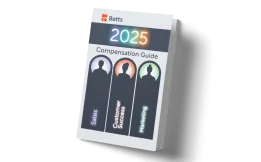In any business, particularly sales, getting ahold of people is a big part of your job. Today, there are three primary tools sales people have: call, text, and email, or CTE as we say at Betts Recruiting. But the breakdown of when to use what methods is not always clear.
Nowadays, most clients expect you to pull out all the stops and call, text, and email, but which method is best for what situation? What’s the best way to communicate and create a genuine relationship with someone using the CTE means?
The most important thing about sales is listening to and understanding people. While emails and texts have become commonplace in daily life, having a live conversation gives you an extra layer of emotion and information that other forms of communication simply can’t provide. Although texting and emailing someone is easy or more convenient, a phone call is typically the best way to build a genuine relationship, gather information, and truly understand the person you’re working with. Texting and emailing are great for scheduling or detailing specific concepts, but can take away from a working relationship.
BUILDING RELATIONSHIPS
A phone call allows you to listen and react to the other person’s agenda. While email may be a direct and to-the-point method, so much can be lost in translation. Especially when building out a new relationship, having the ability to hear an influx or subtle emphasis change in someone’s voice is essential, and allows you to change course easily. Additionally, people today are overloaded with information. Many have come to dread the daunting task of facing their inbox every morning. While people may be hesitant to commit to talking to you over the phone, doing so will build much stronger connections.
LEARN, LISTEN, AND ACT FASTER
Live conversations get to the point and all you to understand next steps, as opposed to speaking back and forth via email. At Betts, we use Slack for scheduling and Salesforce for tracking. For initiatives and action calls, though, we use HighFive, a video conferencing service that connects all of our offices. We’ve found the best practice is to take the time to have a phone call, and track it afterwards. That way, you can hear what’s happening, ask follow-up questions, and learn in real time. A phone call accomplishes a lot more in a much shorter amount of time.
SHOW YOUR ENTHUSIASM
For employees in any industry, it is much easier to show your excitement about a prospect or opportunity over the phone compared to email. Personalizing why a specific opportunity is the best fit for someone is more effective when you’re excited about the solution. Instead of losing momentum over email, carry your encouragement through the phone and make a partnership with your business more enjoyable. Removing the added stress of replying to yet another email can actually benefit your company by making a client more responsive than they would have been if they attempted to type out their thoughts in the same amount of time.
TAKE THE TIME
Understanding the point of a conversation before dialing is critical to successful phone calls. If you get someone on the phone and waste his or her time, you won’t get another call. Be ready to answer their questions by preparing ahead of time, as opposed to having three different “clarification question” emails. In the same way you proofread an email, make agendas for your phone calls.
THE COMMUNCIATION HIERARCHY
Everyone has their preferences for reaching out to and communicating with people. But most of the time, I’ve found that if someone has “reached out and hasn’t heard back,” they probably missed one of the three methods in CTE for effectively communicating.
People will ignore your calls occasionally and send you to voicemail. This is where CTE and the quick text comes in to play, letting the person know you called, what you called about, and asking for a call back. If you don’t get a response after an hour, then follow up with an email and your detailed availability. Emails and texts are great ways to schedule conversations, but not for having them. Getting someone on the phone will be a much more productive use of time for both parties. Building relationships over the phone is the fastest, and most authentic, way to grow networks and succeed in your business.
